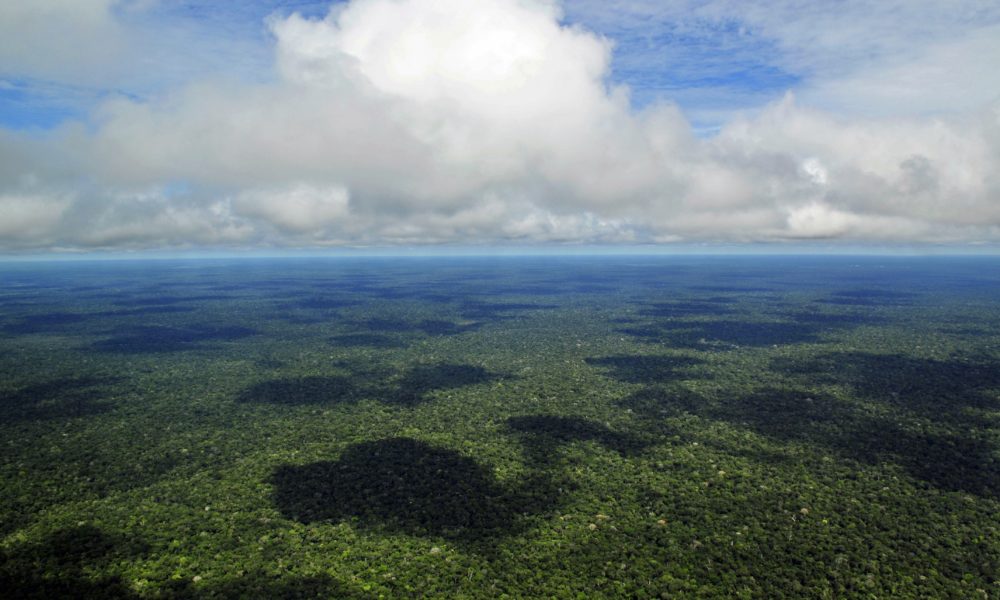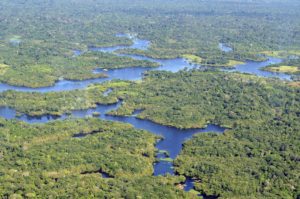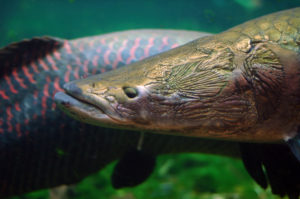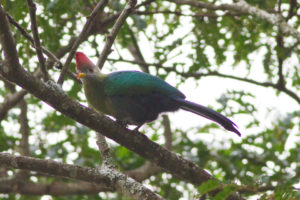
To Save the Biodiversity: Send the Locals to the Rescue
Efforts to save and enhance biodiversity work better when local communities are involved. That is the conclusion of research undertaken in 2021 by 17 scientists on “The role of Indigenous peoples and local communities in effective and equitable conservation,” published in the journal Ecology & Society. “Involving IPLCs [Indigenous peoples and local communities] is perceived as important not only because it makes conservation more equitable, but also because it has the potential to produce better biodiversity outcomes or more effective conservation,” say the scientists.

Amazon rainforest
(Credit: Neil Palmer/CIAT, CC BY-SA 2.0, via Wikimedia Commons)
This conclusion stems from examining examples of conservation projects carried out since 2000 and their results, studying the effects on habitats and species and local communities.
“We found improvements for conservation and people are much more likely when Indigenous and local communities are environmental stewards,” say the authors of an article published in The Conversation. They conclude that when in charge, members of local communities can establish a shared vision for conserving the environments they live in and for coexisting with wildlife. They highlight that applying their knowledge and ways of managing habitats and species is far more effective at protecting nature than efforts controlled by outside organizations. “In stark contrast, only a small minority of the projects led by states, international NGOs, or companies enhanced both conservation and local people’s lives.”
The researchers found that a third of the projects run by outsiders were detrimental for both people and nature because they are unable to enforce the rules and do not provide enough incentives for locals to adhere to them and avoid resistance.
The article in The Conversation provides many examples of effective local community efforts. Take, for instance, the Indigenous Tsou villagers in southwest Taiwan, who took over conservation activities in a state-protected forest. Putting the community in charge reduced poaching and illegal logging. Another illustration involves the informal guards from the Brazilian Amazon, who are protecting nests of the giant Amazon River turtle in the Juruá river, reducing poaching levels to only 2% of nests. This compares to 99% elsewhere, including in state-run protected areas.

Close up of an arapaima
(Credit: Jeff Kubina from Columbia, Maryland, CC BY-SA 2.0, via Wikimedia Commons)
There are also examples outside of the study. Efforts in the Amazon, one of the most biodiverse places on Earth with over 3 million species, have saved the arapaima, one of the largest freshwater fish in the world. Known locally in Brazil as pirarucu, this is one yummy fish, making it an important food source for local inhabitants and farther-flung populations alike. Overfishing led to its decline and, although fishing it was prohibited in the 1990s, illegal fishing led it to disappear from parts of the Amazon. But two decades of efforts by local communities, through community-based management agreements, have brought it back.
“Local communities guard lake entrances year-round to ward off illegal fishers coming from outside of the protected area. Harvesting is only allowed between August and November, and any fish smaller than 1.55 meters (5 feet 1 inch) long is returned to the water,” according to information on CNN.
“Before the arapaima management … we had no rights to take care of these lakes. Commercial fishers conducted predatory fishing, where [they] used to harvest as much as they could. Our lakes were severely depleted and overfished and the arapaima was virtually non-existent,” said Francisco das Chagas Melo de Araújo, a community leader from Xibauazinho in Amazonas state.
The population of the beleaguered arapaima has more than quadrupled as a result. And the project is bringing jobs and improving livelihoods, a win-win for both the fish and the communities.
For its part, BirdLife International details many examples of successful community-led efforts to protect and restore biodiversity worldwide.

Bannerman’s Turaco
(Credit: Ron Knight, CC BY 2.0, via Wikimedia Commons)
For example, studies of the vegetation cover of Mount Oku in northwest Cameroon, an important bird area and the last stronghold for Bannerman’s Turaco and Banded Wattle-eye (both endangered), have shown significant regeneration of forest in the past 15 years as a result of a community-managed forest project. Under this project, local communities, enabled by recent legislation and supported by the Government of Cameroon, now legally manage three-quarters of the forest. (Applications to bring the remaining area under similar management are pending.)
“From 1995, the rate of regeneration (c. 2.3% per year) has significantly exceeded the rate of deforestation. This reversal is a tribute to the success of local people in taking action to conserve their natural resources. It clearly also benefits the unique biodiversity found in the region.” – BirdLife International
In another example, a Nature Seychelles project in the archipelago has opened up an educational center in the heart of a Mahé wetland. Nearly a quarter of all Seychellois live on the island of Mahé and have easy access to it and its programs. The center provides a welcome reminder of the importance of biodiversity to life on the islands. “Until recently this wetland was regarded as just a hole in the ground,” said Nirmal Jivan Shah, Chief Executive of Nature Seychelles. Now it mixes “ecosystem restoration with awareness and education, and conservation with community action,” he said.


Rather surprised at this rather late research in the history of the environment. Having worked for WWF international in the early 1980s all projects undertaken were under the slogan “Think globally, act locally”. It should be evident that local indigenous tribes depend on and therefore the majority are focussed on the sustainability of the environment we live in. It is really where money is exchanged for a natural resource that common sense and fundamental values change.